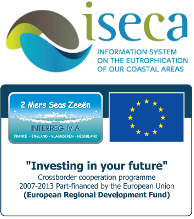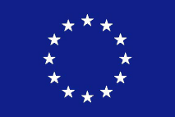One of the objectives of the ISECA project is to show where the nutrients causing eutrophication come from and to compare the quantities flowing down each of the identified routes. For nitrogen containing compounds like nitrogen oxides and ammonia, one of the mechanisms transporting them to the sea is by air - emissions are taken high up into the atmosphere and carried around by winds and may later get dissolved into the rain drops and fall to the ground and the sea surface. It is also possible, especially for ship engine emissions, to be carried by the wind horizontally, close the sea surface, and to partially dissolve on contact with the water. The main emitters of nitrogen oxides are power generation, industry, transport and our homes in the winter when we use fuel for heating. For ammonia, the main source is agriculture.
The results of computer modelling are presented of the transport by air of these substances from their sources to the coastal waters in the 2Seas region. The computer models use weather data (temperature, wind, humidity) and emissions data to calculate the transport and deposition of the nitrogen containing gases. The examples provided are for emissions in 2000 and 2009 and historical weather data for 2009 and 2011. All four combinations between these emission and simulation years are included, so that comparisons can be made and the effect of both the emissions and the weather can be demonstrated.
Click here to read more and view all model results on Atmospheric Transport and Deposition of Nitrogen-Bearing Eutrophicants.
For registered users, the same data is also available in the Model Scenarios section of the ISECA Web Application Server (WAS) which provides tools for zooming in at any choosen point of the sea or coast and examining the data in greater detail.
 |
|
| 2009 Simulation : Emissions Data (2000), Pollutant (Ammonia), Polluter (Agriculture) |













